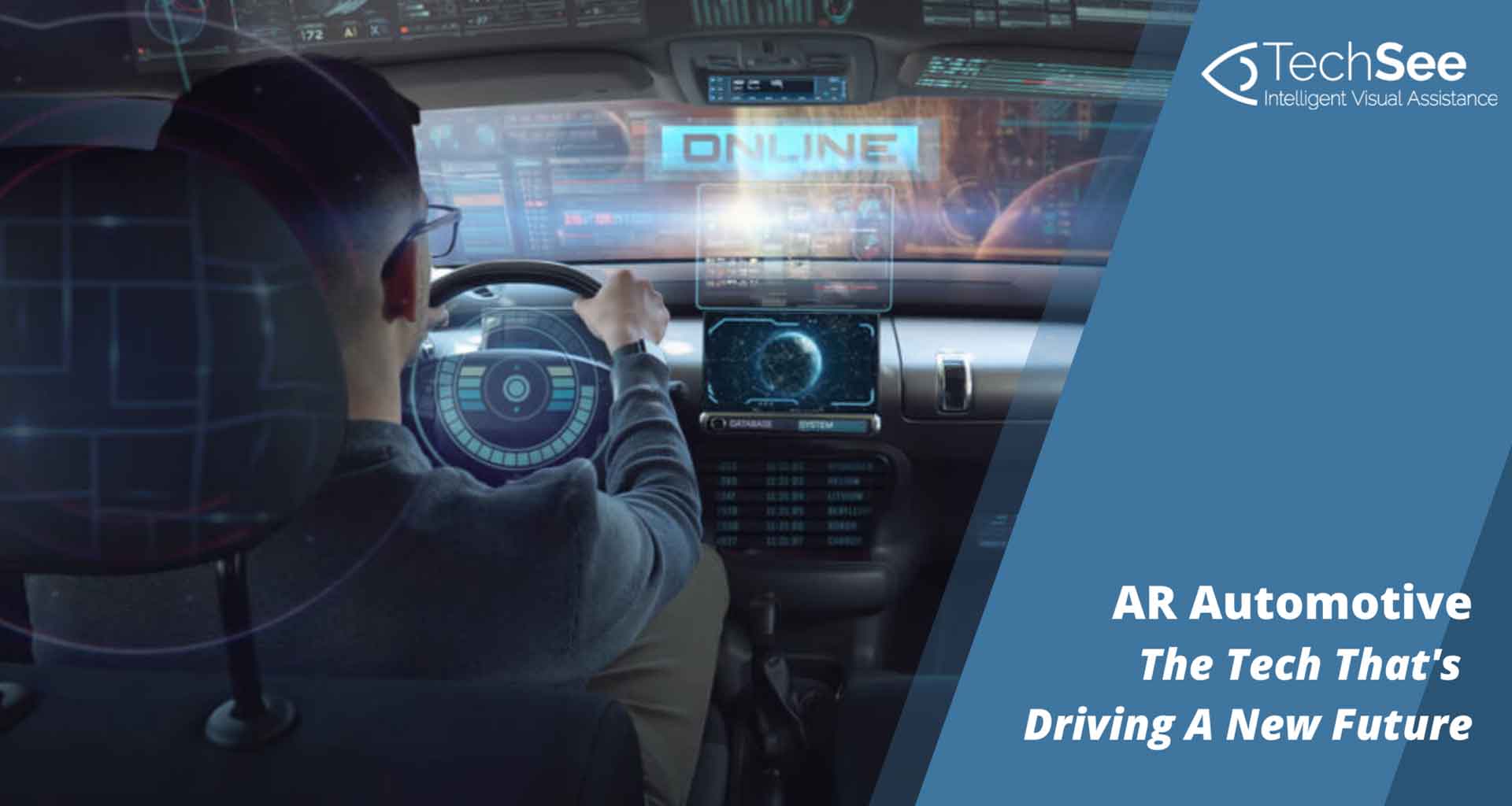Contents
- Increasing Road Safety with AR in Cars
- Expand the View with Automotive Augmented Reality
- Remote Roadside Assistance for AR Vehicles
- AR automotive roadside assistance in action
- Why is it useful to help drivers fix their own cars?
- The Augmented Reality Car Owner’s Manual
- Augmented reality driving: Hyundai & Mercedes
- The Ultimate AR Automotive Assistant
- The Final Destination for AR in Automotives
- AR Automotives, Soon to be Our Reality?
Augmented Reality is on the verge of changing how we live, work and play. And it’s also changing the way we drive, with AR automotive technologies now hitting the fast lane.
The automotive industry is fertile ground for innovation. Leading car manufacturers, as well as independent service vendors, are investing millions in the development of AI and AR-powered tech systems that will reinvent the driving experience. ABI Research predicted in 2018 that the total AR automotive market will grow at an annual rate of 177%, reaching $5.5 billion by 2022.
Let’s explore the areas where leading marques are already making extensive use of automotive augmented reality technology.
Increasing Road Safety with AR in Cars
Enhancing driver safety is a core goal of every car manufacturer. Integrating head-up displays (HUDs) reduces dangerous distractions by displaying key information directly into the driver’s line of sight – on the windshield. With augmented reality in cars, a HUD can project important data such as:
- the car’s speed
- the state of the vehicle’s systems
- navigation instructions, and
- safety warnings such as traffic pattern changes or adverse weather conditions.
AR-based HUDs are already available in a range of car models, including the BMW 7 Series, Toyota Camry, Chevrolet Camaro, Mazda 6 and Lexus LS 500, with the market expected to hit $4.6 billion in 2025, up from $1.3 billion in 2020.
Expand the View with Automotive Augmented Reality
Panasonic recently unveiled a demo car equipped with AR automotive technology that projects images directly onto the inside of the windshield. This augments the driver’s vision with a very wide field of view from outside the car. Internal cameras track the position of the driver’s head and eyes to ensure the AR view is positioned precisely within their line of sight.
Remote Roadside Assistance for AR Vehicles
Another vital role that AR can play in the automotive industry is providing faster and more effective roadside assistance. This very effectively meets the immediate needs of motorists who find themselves in high-stress environments.
AR automotive roadside assistance in action
The automotive augmented reality solutions enable drivers to use their smartphone cameras to transmit images and videos of their dashboards or engines. They send them to contact center agents or virtual visual assistants, facilitating the fastest possible remote diagnosis and guided customer rectification.
The agent helps the stranded driver by annotating the image, clarifying the issue immediately and visually guiding the customer to ensure instructions are followed correctly.
Why is it useful to help drivers fix their own cars?
With the high costs of breakdown recovery, auto clubs and insurers are discovering the advantages of empowering motorists to diagnose and fix many common issues themselves. By implementing AR in the automotive industry, they can slash mechanic dispatch rates and still deliver enhanced levels of customer satisfaction.
The Augmented Reality Car Owner’s Manual
Car manufacturers were early adopters of AR car manuals, allowing owners to use their smartphones or tablets to become acquainted with their new vehicles. Using augmented reality in automotive owner’s manuals helps carmakers to educate drivers about technical features and maintenance guidelines. This enables them to spend more time on the road and less at the shop.
Augmented reality driving: Hyundai & Mercedes
Hyundai’s Virtual Guide app was introduced to the market in 2015. It allows a car owner to point their smartphone at different parts of the vehicle, at which point AR overlays display information such as how to change the air filter, engine oil, or brake fluid, or how to enable features like dynamic cruise control and Bluetooth phone pairing.
Ask Mercedes is the company’s AR automotive app that allows it to virtually assist customers and answer any questions about their new vehicles.
The Ultimate AR Automotive Assistant
While AR automotive tech has certainly come a long way, the true test of the technology will be the ability to deliver two-way communication: an AR-powered co-driver that can watch and analyze the driver’s movements. This requires more than a simple gestural interface. It’s about complex movement analysis and advanced image recognition that provides the virtual assistant with the ability to interpret the driver’s actions in real-time, and to provide instant feedback.
Jaguar Land Rover has developed driver monitoring technology that uses a driver-facing camera and biometric sensors to analyze the motorist’s facial expressions to determine their mood. It then adapts the interior settings accordingly, for instance:
- adjusting the temperature
- ambient lighting, and even
- adapting the music.
As the AR car system learns the driver’s temperament over time, it will make customized adjustments based on previous interactions.
The Final Destination for AR in Automotives
The real killer app for AR in the automotive industry is the intelligent, interactive driver assistant that combines navigation and piloting with operational guidance on vehicle features. This truly touches every aspect of the driving experience. The key to achieving this is the combination of AR and Computer Vision AI, as demonstrated by the Driver Connect Catalyst team that won the Outstanding CurateFx Ecosystem Design award at TM Forum’s Digital Transformation World 2019 Event.
The event was championed by Jaguar, and Cerillion, Salesforce, Nokia and TechSee were all participants. The team addressed many use cases, including operational guidance for vehicle features using AR visual assistance and concierge-level roadside assistance using AR. The automotive augmented reality technology enables the driver to resolve their own issue during a breakdown.
AR Automotives, Soon to be Our Reality?
Once considered a whimsical novelty, AR has found numerous practical applications in the automotive industry. As the ideal interface for visual guidance, AR is highly effective in meeting the growing demand for tailored automotive experiences. AR automotive technology serves as the underlying technology for HUDs, remote roadside assistance and AR-based owner manuals.
As key Proof of Concepts has proven, the automotive industry is poised to take advantage of the many new opportunities that AI and AR offer. From increasing driving safety and efficiency to delivering more personalized products and smart solutions for the next-generation drivers. Exciting times are ahead for the automotive augmented reality industry; buckle up and enjoy the ride.
Discover how TechSee’s AR automotive visual guidance solution helps to reduce breakdown recovery costs, while saving precious time.







